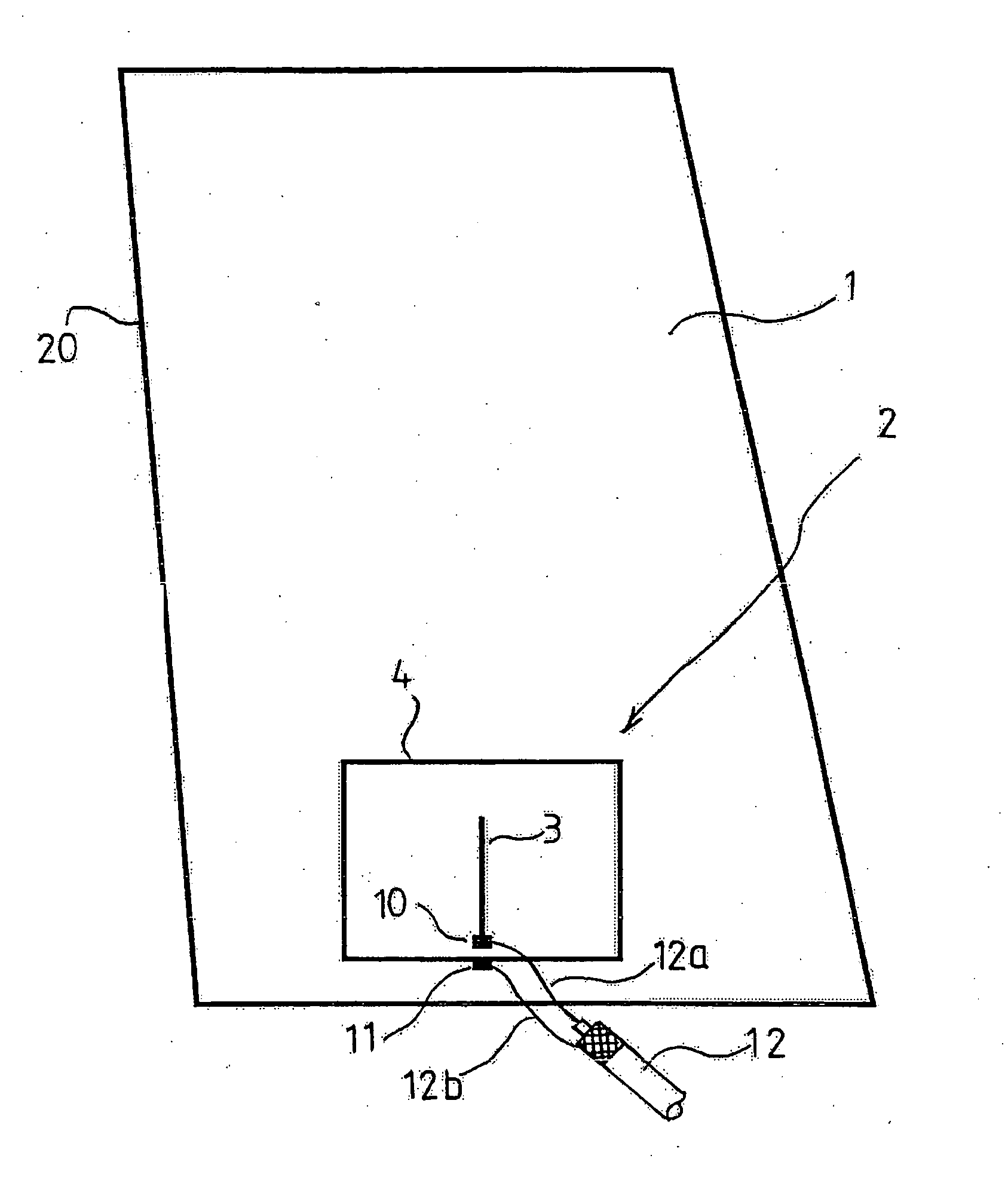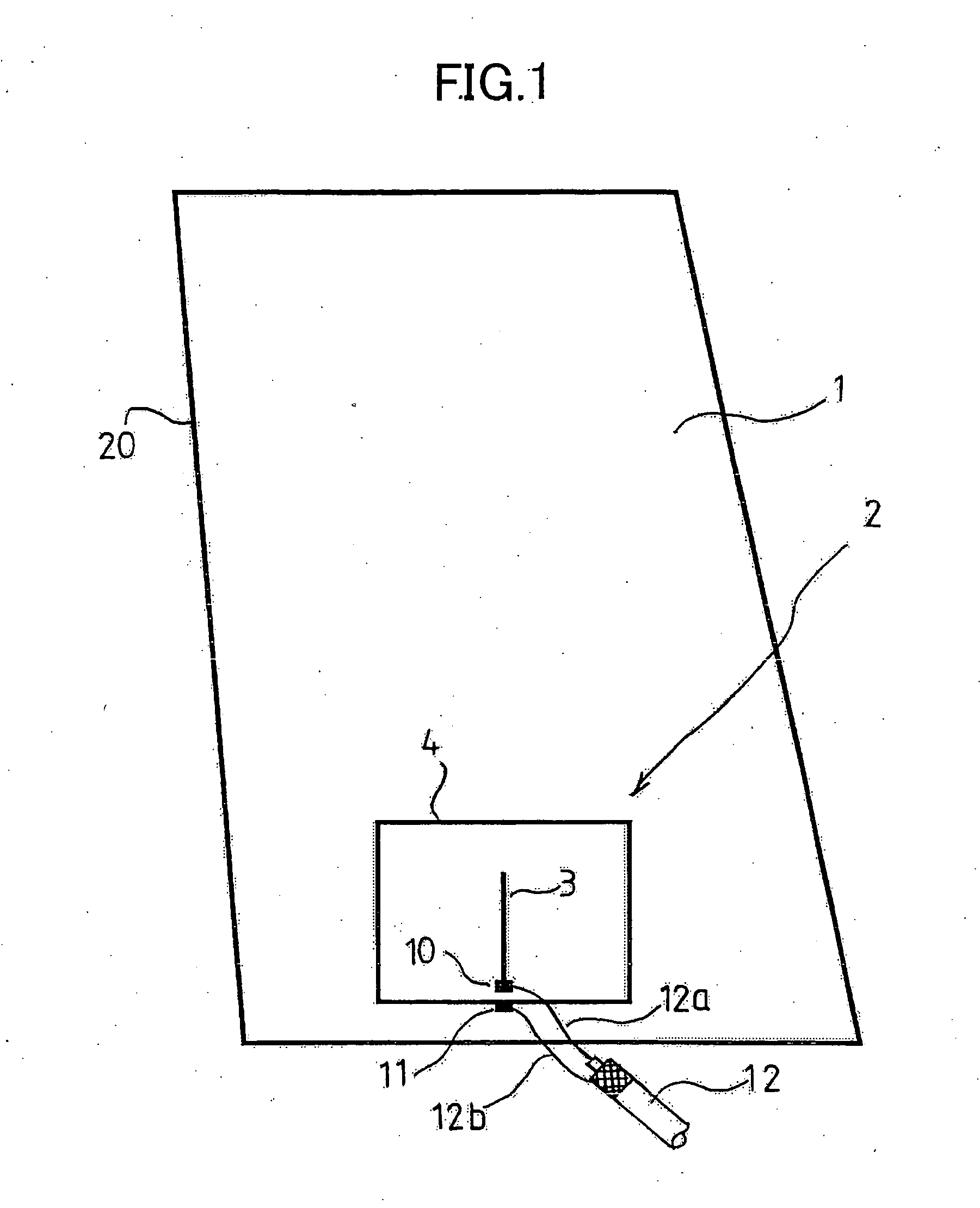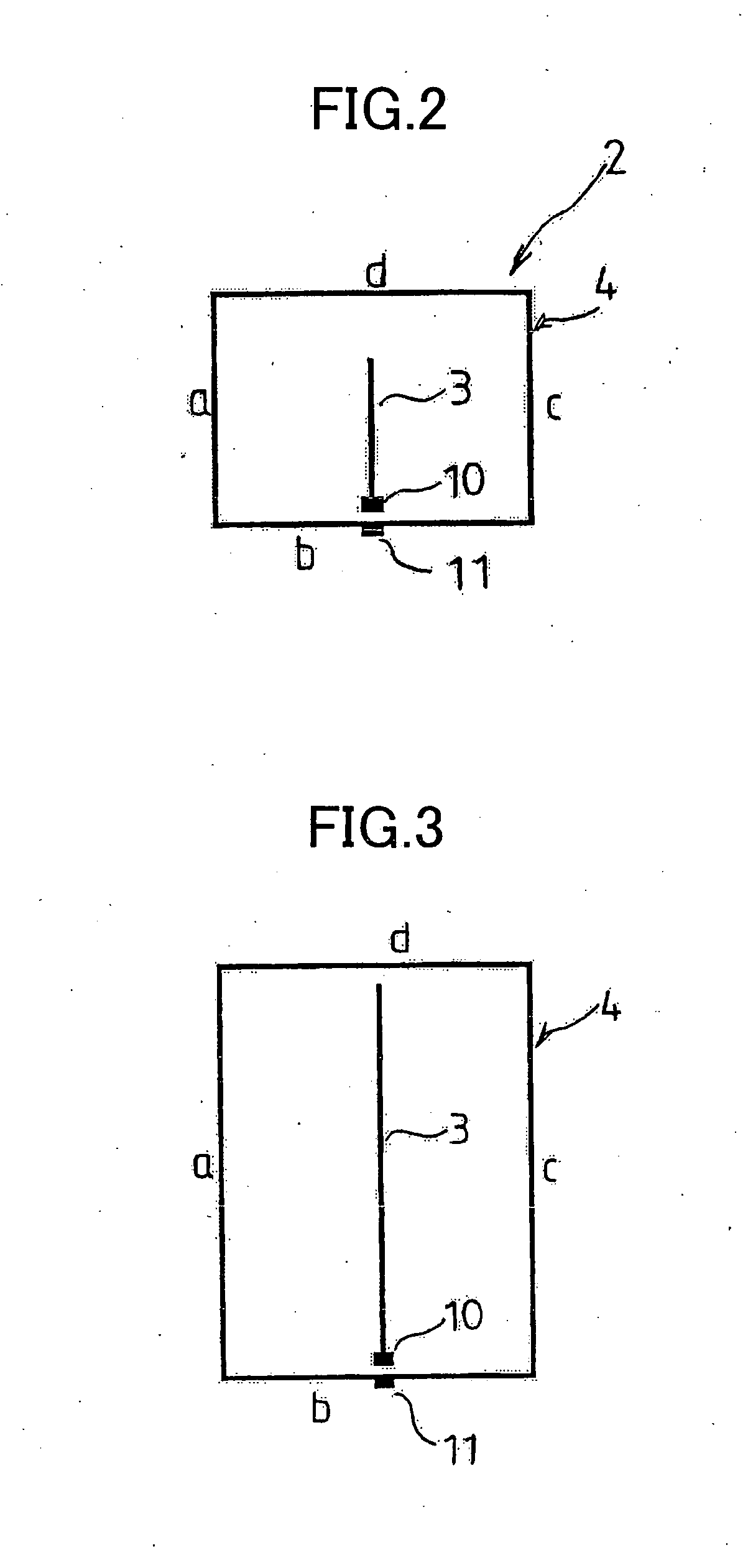Antenna for vehicle
- Summary
- Abstract
- Description
- Claims
- Application Information
AI Technical Summary
Benefits of technology
Problems solved by technology
Method used
Image
Examples
example 1
[0136]FIG. 1 is a view seen from the outside of a vehicle of an antenna pattern of the invention which is provided on a side window glass 1 of a vehicle.
[0137] A pattern shown in FIG. 2 is such that a first element 3 and a second element 4 were printed and baked to a passenger compartment side of the glass 1 or a seal or sheet on which the pattern is printed was securely affixed to the surface of an insulating member such as a resin body and is such as to be used as an antenna for portable telephones with a frequency of 800 MHz band.
[0138] A first feeding point 10 and a second feeding point 11 were provided in such a manner that the second feeding point 11 was situated close to a lower portion of the first feeding point 10, and a perpendicular line, whose length corresponds to ¼ of the wavelength of radio wave to be transmitted and received, was extended perpendicularly upwards from the first feeding point 10, and this was made as the first element 3.
[0139] The antenna 2 is such ...
example 2
[0147] Example 2 is a modified example in which the pattern of Example 1 was modified such that the length of the first element 3 was modified to ¾ of the wavelength of radio wave to be transmitted and received, the full circumferential length of the second element 4 was to three wavelengths and the second element 4 was formed into a vertically elongated quadrangular shape as shown in FIG. 3, an antenna pattern so formed according to the invention being provided on a passenger compartment side of a sheet glass.
[0148] Namely, the length of the first element 3 was made to correspond to a line extended ¾ of the wavelength of the transmission and reception radio wave from the first feeding point 10 for the frequency of 800 MHz, that is, the length became 165 mm long, assuming that the wavelength compaction ratio of the glass plate in the frequency of 800 MHz is 0.6, and the first element 3 was provided perpendicularly so as to be a perpendicular line.
[0149] In addition, as to the seco...
example 3
[0154] Example 3 is also a modified example in which the pattern of Example 1 was modified such that the length of the first element 3 is modified to a length corresponding to ¼ of the wavelength of the transmission and reception radio wave, the full circumferential length of the second element 4 was to a length corresponding to one wavelength, and furthermore, the shape of the second element 4 was formed into a deformed quadrangular shape as shown in FIG. 4, an antenna pattern so formed being used as an antenna for portable telephones with a frequency bandwidth of 2 GHz band. The pattern so formed was printed and baked to a passenger compartment side of a sheet glass or a seal or sheet on which the pattern was printed was securely affixed to a passenger compartment side of a window glass 1 or the surface of an insulating member such as a resin body.
[0155] The second element 4 was formed into a quadrangular shape which have four angular corners at upper and lower and left and right...
PUM
 Login to View More
Login to View More Abstract
Description
Claims
Application Information
 Login to View More
Login to View More - R&D
- Intellectual Property
- Life Sciences
- Materials
- Tech Scout
- Unparalleled Data Quality
- Higher Quality Content
- 60% Fewer Hallucinations
Browse by: Latest US Patents, China's latest patents, Technical Efficacy Thesaurus, Application Domain, Technology Topic, Popular Technical Reports.
© 2025 PatSnap. All rights reserved.Legal|Privacy policy|Modern Slavery Act Transparency Statement|Sitemap|About US| Contact US: help@patsnap.com



